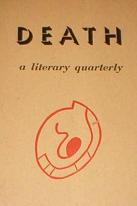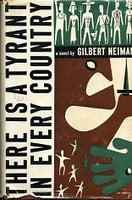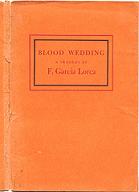 "A writer's first duty is to himself--to liberate himself, to come clean of his past, of his death, to come alive. A personal record. No time for anything else. Anything else is literature--with a bad smell!"
"A writer's first duty is to himself--to liberate himself, to come clean of his past, of his death, to come alive. A personal record. No time for anything else. Anything else is literature--with a bad smell!"----Michael Fraenkel,
The Genesis of Tropic Of Cancer, p. 45.
"Fraenkel! If he were here I would put my arms around him and hug him! Where is that little man with the bright glancing eye, the flame in his guts, the fire in his brain, the fierce, inquiring mind, the shameless arrogance and humility that makes one weep, so deep is it and so genuine. Fraenkel? Why little Fraenkel, so despised, so misunderstood, so tortured and bound up with his inner conflicts--Fraenkel is a man very much alive, a man with the Holy Ghost in his bowels, where it belongs, and if he is the philosopher of death he breathes more life than all that crew combined."----Henry Miller, in a letter to
Emil Schnellock, May 20, 1933
Michael Frankel. The Weather Prophet. "Boris" in
Tropic Of Cancer. Henry Miller's landlord, early supporter, muse for all Death-related themes,
Hamlet correspondent, much abused friend, blunt critic, publisher, and intellectual.
I can't cover Fraenkel in a single post, so I'm going to break them up into blog pieces over the next week or so. For today, I've strung together a biographical timeline drawn from various books about Miller, plus a few web sources.
If I were fortunate enough, I would have a copy of Walter Lowenfels and Howard McCord's
The Life Of Fraenkel's Death: A Biographical Inquest (1970), which I assume contains more detailed information than I'm able to provide here.
[**UPDATE March 2007: Since this biography was first posted, a few errors have been pointed out to me. I mostly used the three most accesible Miller biographies when compiling this timeline, but more recent Fraenkel research by Karl Orend shows that I'm wrong on several points. These changes have been added in red; unfortunately, I don't have primary source references to back-up this updated information; but it comes from Orend's work, which I consider highly credible.]MICHAEL FRAENKEL 1896 - 1957
1896 Fraenkel is born to Lithuanian-Jewish parents (in New York?)
[born in Lithuania, came to NYC circa 1902]1906 (circa) Young Michael must work as a child, selling candy to factory workers. Sells papers.
1916-1926? Sells encyclopedias, plus used, outdated, and remaindered books, off of which he makes a fortune. Compounded with his Stock Market investment returns, he's worth $100,000. [ths was his own business
 1926
1926 Moves to Paris to write.
1927? A couple of poems are published in
[Eugene Tolas'] transition magazine.
1928 - Living in Vezelay, France, in a schoolhouse called Maison de Carrefour, where his wife Blanche teaches; they have two children (ref. Karl Orend, Nexus journal 3, p. 72)
1929 Begins work on his
Weather Paper.
[this is the year he really began developing his theories about Death]
1929 Fraenkel's self-made fortune, dwindled after three years in Paris, is hit even harder by the Stock Market Crash.
1930 Fraenkel and fellow expat American Walter Lowenfels create the self-financed Carrefour Press. Their first publication is a pamphlet manifesto called
Anonymous: The Need For Anonymity, in which they make a case for writers to hide behind their words. This is followed immediately by Fraenkel's own
Werther's Younger Brother ... published anonymously, of course.
1931 Lowenfels introduces Fraenkel to Henry Miller (in the 1981 preface to
Hamlet, Miller says that Bertha Schrank introduced them
[neither is true -- seems that Miller met Fraenkel through J. Millard Osman] Miller
stays at his house at 18 Villa Seurat for a few weeks. Miller is impressed with
Werther's and much engaged by Fraenkel's Death talk. Michael tells Henry to destroy
[re-write] Crazy Cock. In July, Frankel is forced to sublet the Villa Seurat house
[not quite]. He returns to New York
[in 1932].
[Fraenkel's divorce from his wife is also underway this year.]1932 Fraenkel's finances are now exhausted, forcing him to get back into the bookselling business. Anais Nin offers to finance the publication of
Tropic Of Cancer on Fraenkel's Carrefour Press, but Michael is not very impressed with the much-reduced latest draft, which no longer contains the Death themes he'd inspired Henry to write.
[not true - the book was revised later]. In July, Fraenkel tells Henry he'll have it published in Belgium, but then he and Lowenfels have a falling out and the idea is forgotten. Henry keeps in touch with Michael in New York via his N.Y. friend Emil Schnellock.
[the opening paragraph of
Cancer will eventually contain words directly inspired by Fraenkel:
"We are all alone here and we are dead."]
1933 Fraenkel goes back and forth between Paris and the States.
[Fraenkel was often in China and the Phillipines around this time].
1934 Has made $50,000 from his bookselling business, in which he distributes American overstock to places like China and the Philippines, and sells outdated dictionaries and the like to nuns in Puerto Rico.
[this last part apparently untrue].1934 Henry Miller moves back into 18 Villa Seurat. He and
Alfred Perles treat Fraenkel poorly, stealing from his pockets, tormenting him, and, in Perles' case, fooling around with his girlfriend behind his back
[this apparently not true].
Tropic Of Cancer is published: Miller sends the first copy to Fraenkel.
 1935
1935 In June, Anais is disgusted with Fraenkel's ego and his claims to have been indirectly responsible for Miller's
Black Spring. Nin buys a press in which to publish her own work, but Miller and Fraenkel use it for their own purposes
[not true?], despite having named it Siana Press (Anais spelled backwards). In September, he, Miller and Perles conceive the thousand page
Hamlet book, while having drinks at Cafe Zeyer. The correspondence begins in November.
1936 A collection of his poems from 1927-1930 is published as
Death In A Room. Also, his
Bastard Death: Autobiography of an Idea is published, and is reviewed by George Orwell in the
New English Weekly.
1938 In October, the
Hamlet correspondence ends, leaving a rift between Fraenkel and Miller. [this entire conflict is described in detail in the book
Henry Millers' Red Phoenix.]
1938 Leaves Paris for Puerto Rico, effectively ending his association with the Villa Seurat group.
1939 An abridged version of the
Hamlet letters is published by Carrefour Press while Fraenkel is still in Puerto Rico. Fraenkel's
Death Is Not Enough: Essays In Active Negation is published.
1940 Fraenkel goes to Mexico in a quest to get
Bastard Death printed there. He stays there for four years.
 1941
1941 Volume II of
Hamlet is published by Carrefour.
1943 A complete edition of
Hamlet is published by Carrefour.
1945 Michael contributes
The Genesis Of Tropic Of Cancer to
The Happy Rock Miller tribute.
1946 Fraenkel and Robert Duncan put out
Death: A Literary Quarterly, which includes a letter from Henry Miller. [
Note: Sam Bluefarb has stated (personal email, OCT 2008) that it was not Duncan, but Harry Herschkowitz with whom Fraenkel collaborated on this publication].
1947 Irving Stettner prints Fraenkel's
The Day Face And The Night Face.
1957 Michael Fraenkel dies in May (the
New York Times obituary defines him as "poet and critic"). His widow,
Daphne, inherits Carrefour Press and Fraenkel's work, including the
Hamlet letters.

 Ben Grauer [pictured at left from the back of the Life As I See It LP sleeve] was a notable American media personality of the 40s and 50s (I spoke of him briefly in this post). He also happened to be the brother of Bill Grauer, who co-founded the mostly-jazz Riverside Records in 1954. Grauer wrote liner notes for the Miller recordings, which I assume would enlighten me on the context of the interview, but the scan of the back sleeve (from which I found the photograph) is illegible. Ben interviewed others for the Modern Voices series, including Elenor Roosevelt in 1957.
Ben Grauer [pictured at left from the back of the Life As I See It LP sleeve] was a notable American media personality of the 40s and 50s (I spoke of him briefly in this post). He also happened to be the brother of Bill Grauer, who co-founded the mostly-jazz Riverside Records in 1954. Grauer wrote liner notes for the Miller recordings, which I assume would enlighten me on the context of the interview, but the scan of the back sleeve (from which I found the photograph) is illegible. Ben interviewed others for the Modern Voices series, including Elenor Roosevelt in 1957.











 I recently re-read Henry Miller's essay Quest, from
I recently re-read Henry Miller's essay Quest, from 



